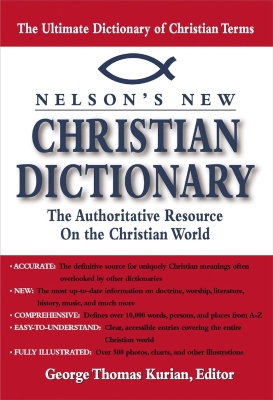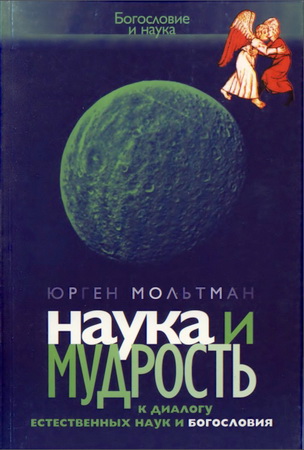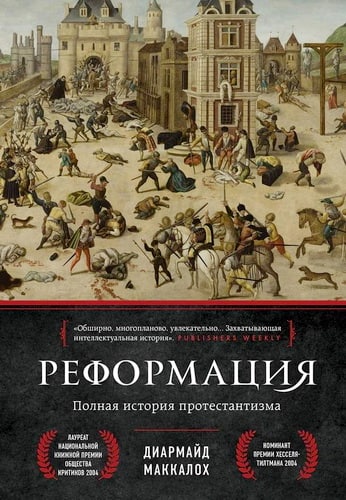
Kurian - Nelson’s New Christian Dictionary - модуль BibleQuote
Kurian - Nelson’s New Christian Dictionary
George Thomas Kurian, Editor. – Nashville: Thomas Nelson, 2001. – 10101 p.
ISBN 0-7852-4300-3
Nelson’s New Christian Dictionary (NNCD) stands as an authoritative, comprehensive, and the most current resource on the entire Christian world. It provides up-to-date information on a host of topics, including its doctrines, creeds, key events and people, worship, music, literature, history, arts, and much more. In short, the reader will find this work a treasury of information.
The NNCD is a celebratory work. It celebrates 2,000 years of Christianity since the Incarnation and heralds its third millennium. With 10,000 entries, over 500 illustrations and charts, and 22 appendices, it is one of the most comprehensive portraits of the Christian church at the outset of the third millennium. It attempts to capture the entire universe of the Christian church and chronicle the lives of the men and women who built up, stone by stone, the majestic edifice of faith.
It is an inventory of the great Christian achievements in art, architecture, and music and a record of the traditions, doctrines, literature, and missions that make up the legacy of all Christian churches. The vocabulary covers the depth of Christian experience over 2,000 years, 100 generations, and over 260 nations and territories. This is what St. Paul calls the inheritance of the saints, an inheritance that has grown over 20 centuries and will continue to grow in the future, should the Lord tarry.
This dictionary is evangelical, interdenominational, and ecumenical, emphasizing the lordship of Jesus Christ. It has tried to maintain the highest lexical standards in its definitions, which are written from an unabashedly Christian perspective. In keeping with the ecumenical nature of the work, a number of terms relating to the Lesser Eastern churches have been included. These are the endangered churches of the Christian world that have borne the brunt of Islamic oppression and persecution for fourteen centuries. These are also the churches in which Christianity flowered early, and many of their picturesque traditions, institutions, and terms find an appropriate home in this dictionary.
It is also important to note what has not been included. We have not included secular persons and movements that have little or no Christian significance. Thus readers will not find here entries on Darwin or Marx or Napoleon. This is also not a Bible dictionary. There are a number of excellent Bible dictionaries on the market, and there seemed no particular reason why biblical terms should be duplicated here.
The statistical data (such as the number of Christian martyrs) in the dictionary as well as in the Appendix, "Christian Centuries," are drawn from the World Christian Encyclopedia (second edition edited by David Barrett, George Thomas Kurian, and Todd Johnson, 2 vols., Oxford University Press, 2000). They were compiled by David Barrett, the world’s foremost authority on missiometrics (the science of statistics relating to missions and evangelism), and a distinguished futurist and Christian scholar.
The NNCD does not include articles on countries, except in the case of national churches, such as the Russian Orthodox Church or the Serbian Orthodox Church. As a result, there are fewer entries on Third World Christianity than would have been desirable, given the phenomenal growth of Christian churches in Africa and in some countries in Asia. However, it may be many more decades before this monumental demographic shift is reflected in Christian vocabulary and thus can be included in a dictionary. Long, overview articles are suitable in an encyclopedia, but not in a dictionary where the definitions need to be short, taut, and linked to lexically valid headwords.
This resource is designed primarily for the lay Christian, though the scholar will find much of value here. Its style and tenor, however, are directed more to the level of the laity. To paraphrase Gregory the Great, this dictionary provides "water in which lambs may walk and elephants may swim," that is, it is useful for the scholar and the minister as well as those, Christian or non-Christian, who know little or nothing about the history of Christianity and the people and ideas that shaped it.
* * *
form criticism
(Ger., Formsgeschichte, form-history) Textual study of the Scriptures with the purpose of peeling away the accretions of myth and legend and arriving at the original germ of the story or narrative and the facts as they understood them. Form critics are taxonomists who classify the forms that underlie written documents and literary detectives who reconstruct the process by which the writings reached their present shape. The most important pioneers of biblical form criticism were Hermann Gunkel and Julius Wellhausen, but their application to New Testament studies was the work of K. L. Schmidt, Martin Dibelius, and Rudolf Bultmann. Form-critics also have tried to find the setting in life (Sitz im Leben) of the Gospel accounts in order to reconstruct the original context and purpose of the document. The assumptions under which form criticism developed and the indiscriminate use of the words myth and legend to suggest historical unreliability of biblical accounts give form criticism a negative cast.
libellatici
Christians who, during the Decian persecution (249–251) purchased certificates from the civil authorities that they had sacrificed to idols when in fact they had not. The practice was condemned by the church but condoned in practice.
Operation Mobilization
This international missions organization traces its roots to the mid-1950s, when Dorothy Clapp, a New Jersey homemaker, was offering prayer and Christian literature which led to changed lives in a local high school. One of the students reached was George Verwer, who received a copy of the Gospel of John from the Clapps and made a public commitment to Christ at age 16 in a Madison Square Garden meeting led by Jack Wyrtzen and Billy Graham. In 1957 Verwer was joined by friends in distributing Bible portions in Mexico—supported in prayer and financially by others "at home." Subsequently, he attended Maryville College and Moody Bible Institute (where he met future wife, Deena), and has remained a key organizational leader. Today, over 3000 OM’ers are working in 83 countries to advance the cause of Christ, embracing self-professed core values: knowing and glorifying God, living in submission to God’s Word, being people of grace and integrity, serving sacrificially, loving and valuing people, evangelizing the world, reflecting the diversity of the body of Christ, interceding through prayer, and esteeming the church.





Комментарии
Пока нет комментариев. Будьте первым!